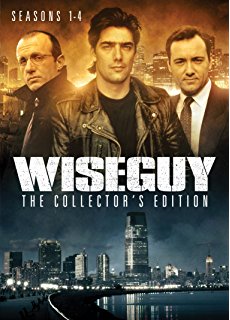His fan base divided into factions, it's an often told tale. There's surreal footage of Dylan preaching to angry crowds about Judgment Day. After a few years of proselytizing, Dylan went back to being a more conventional rock star, touring with the likes of Tom Petty and The Grateful Dead. Yet as the book explains, spirituality has always been at the forefront of Dylan's songwriting.
At first, I was somewhat skeptical if any book could explain Dylan's spirituality. After all, without access to the source himself, what can one really conclude? Instead Marshall relies on Dylan's own words the over 200 interviews he's granted during his career. Marshall also spoke to many who knew Dylan during his born again period. It's clear Dylan was serious about his new faith and the whole thing was not a publicity stunt (as many believed). What we get is not a definitive portrait, but a thought provoking one that adds depth to understanding Dylan's spirituality.
When Dylan released Slow Train Coming in 1979 the songs "Gotta Serve Somebody," "When You Gonna Wake Up," and "Precious Angel" implored listeners to accept Christ as the only path to salvation. The follow up album Saved offered more soulful gospel with "In The Garden" and "Saving Grace." CBS records despised the Saved album and pleaded with Dylan to make a make a more commercial friendly record, the result being the underrated Shot of Love with one of Dylan's most beautiful spiritual ballads "Every Grain of Sand." A few years later Infidels followed, a moody album full of references to the Torah, prompting many to wonder if Dylan had returned to Judaism.
A key theme in the book is how people perceive Dylan's spirituality, his Christian and Jewish fans seem to be in a competition as to which religion Dylan prefers. Prominent Christians such as Jimmy Carter and Billy Graham were elated that a rock and roll icon had embraced Christianity. Dylan's Jewish fans were taken aback, baffled at why Dylan would turn to born again Christianity for answers.
At the same time, Dylan still frequently visited synagogues and appeared on the Chabad telethon three times during the 1980s. In 1983 he visited Jerusalem for the Bar Mitzvah of his son. On the Infidels album released that same year his song "Neighborhood Bully" was unabashedly pro-Israel, endorsing a hawkish foreign policy towards the Arab states.
Dylan's always been a fierce individualist. No group can claim Dylan as their own, a recurring motif in his career, going back to his going electric in the mid 1960s. He's obviously taken much from Jewish and Christian traditions, his admiration for Christ is sincere. His devotion to the traditions of Judaism are also evident in his words and deeds. Some conclude that Dylan has attempted to synthesize the two traditions.
Another strength of the book is Marshall's close attention to Dylan's live set lists, which seem to be a conversation between himself, fans, and detractors. His Christian songs have never left his live repertoire and in the late 1990s he would often perform traditional hymns. In his final concert of the 20th Century, he played the old spiritual "This World Can't Stand Long" as a parting message to the old millennium.
In 2009 Dylan released Christmas in the Heart, a holiday record that blended traditional favorites along with songs celebrating the birth of Christ, Dylan told an interviewer he was a "true believer" in Christ. His 21st Century work is replete with spiritual longing and musings on a world that appears more broken everyday, the Old Testament and New Testament are in never ending conversation.
Reading Bob Dylan: A Spiritual Life one will come away with knowledge of Dylan as one of the most unlikely theologians in an age that relegates theology to irrelevancy. Marshall contributes a new perspective to Dylan's wide ranging catalog and complex relationship with fans and critics.















